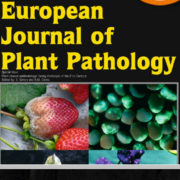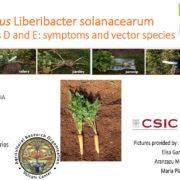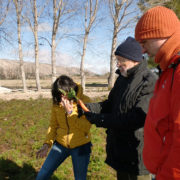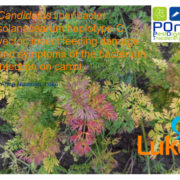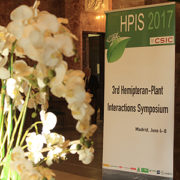Sex-specific probing behaviour of the carrot psyllid Bactericera trigonica and its implication in the transmission of ‘Candidatus Liberibacter solanacearum’
ORIGINAL ARTICLE
C.A. Antolínez 1, A. Fereres1, A. Moreno1
1Instituto de Ciencias Agrarias (ICA), Consejo Superior de Investigaciones Científicas (CSIC), Madrid, Spain
Abstract
‘Candidatus Liberibacter solanacearum (Lso)’ is a pathogen of Solanaceae but also causes serious physiological disorders in carrots and celery (Apiaceae). In carrots, this pathogen is transmitted by the psyllids Bactericera trigonica and Trioza apicalis. How vector sex influences Lso transmission has not been yet elucidated. Here we report the probing behaviours of male and female B. trigonica and their impact on Lso titre transmitted, percentage of transmission, and symptoms produced on carrots when Lso is transmitted by males or females of B. trigonica. Vector sex affected the inoculation of Lso; our results suggest that females might inoculate higher Lso titres than males. However, the percentage of transmission was not affected by vector sex at a density of one or eight psyllids per plant. The number of yellow leaves and root weight were not different when Lso was transmitted by males or females at either of the psyllid densities tested, except for groups of females whose Lso transmission resulted in a higher number of yellow leaves than did Lso transmitted by groups of males. Electrical penetration graphs (EPG) showed that the proportion of individuals who reached phloem tissues was similar for males and females. However, EPGs also showed that females probed more times, ingested longer from phloem sieve elements and reached phloem tissues more frequently than did males during an 8-h inoculation access period (IAP). Our study shows that differences in probing behaviours between males and females of B. trigonica could modulate how Lso is inoculated by psyllids. These results highlight the importance of taking sex into consideration in psyllid studies of probing behaviour and bacterial transmission.
Published on October 14, 2016 by EUROPEAN JOURNAL OF PLANT PATHOLOGY

